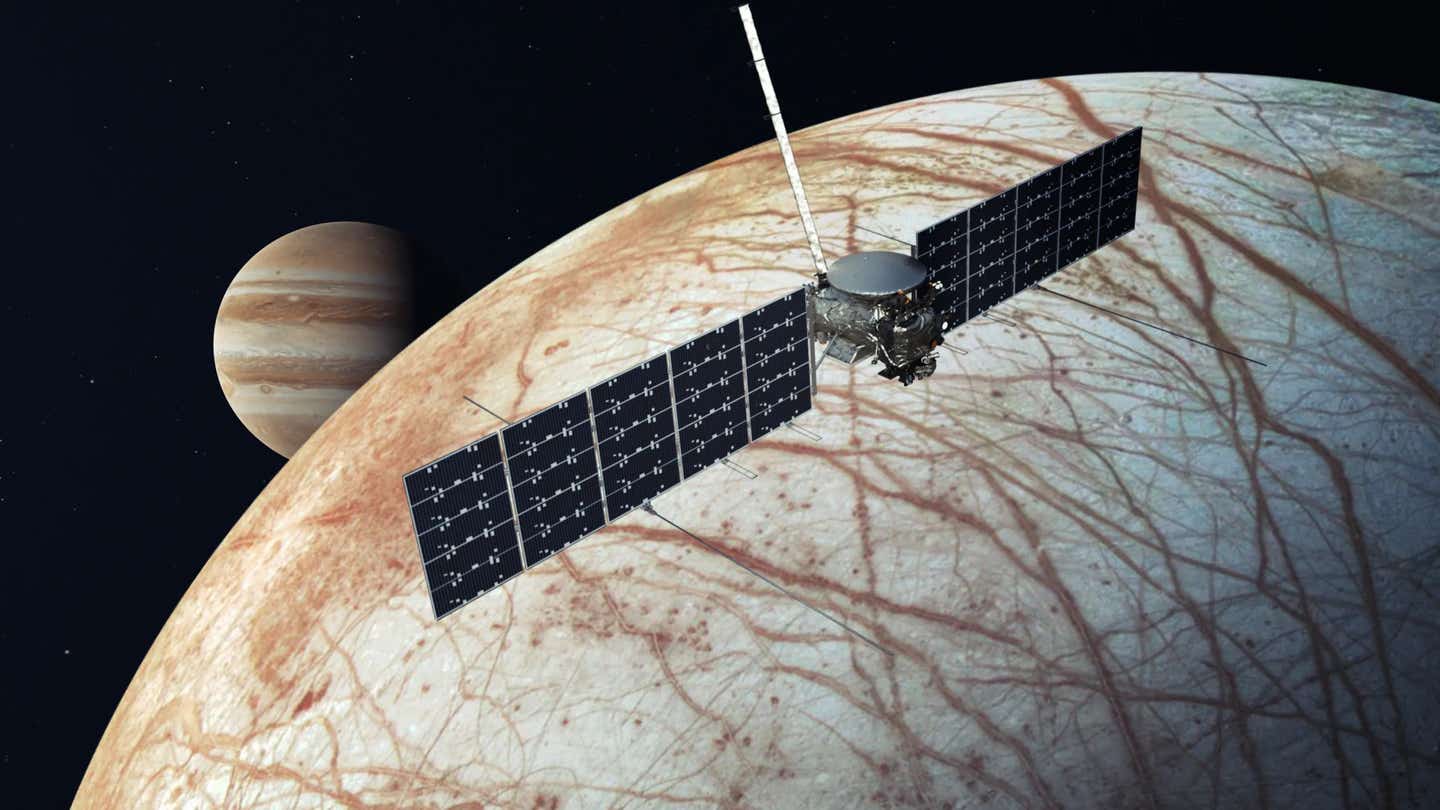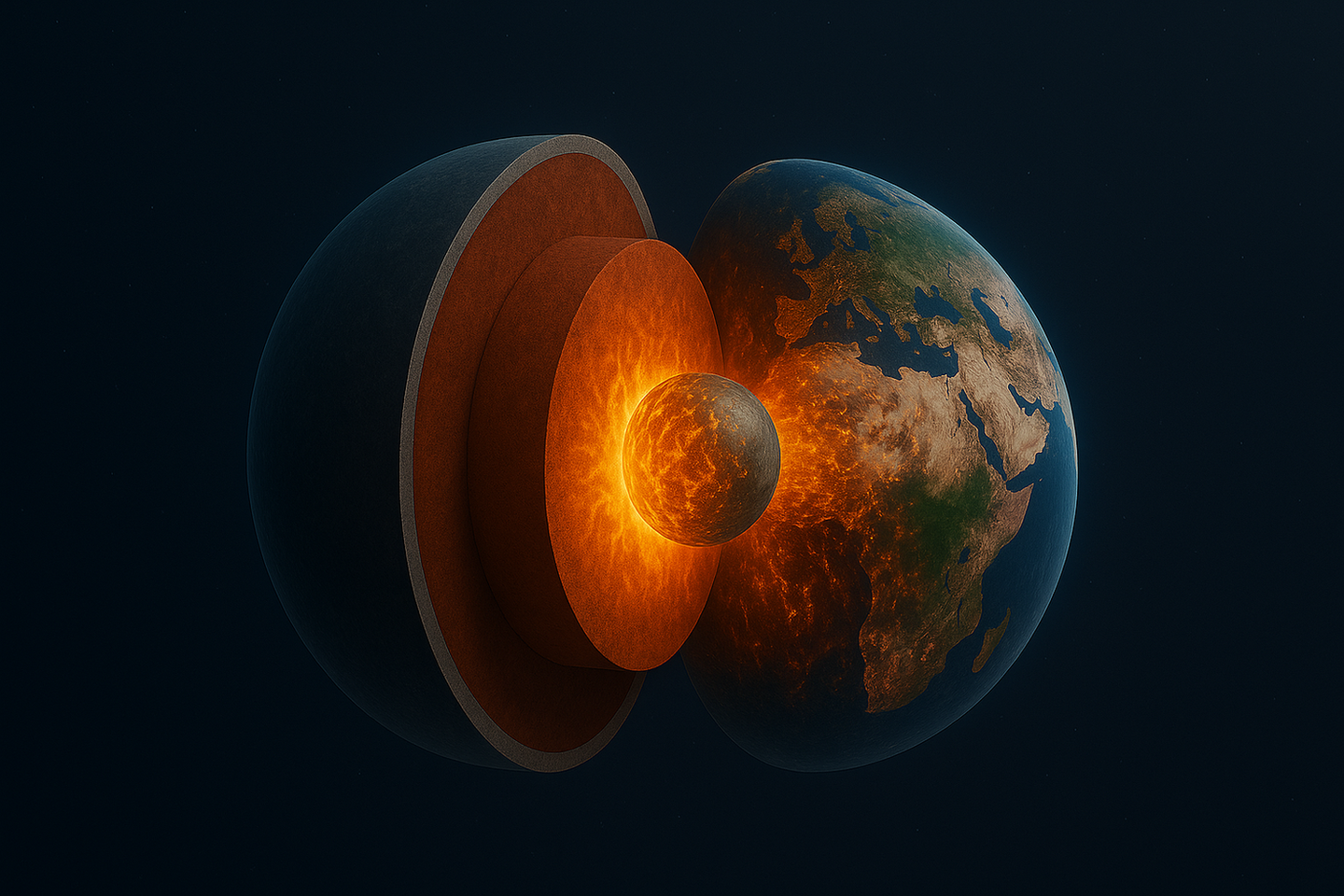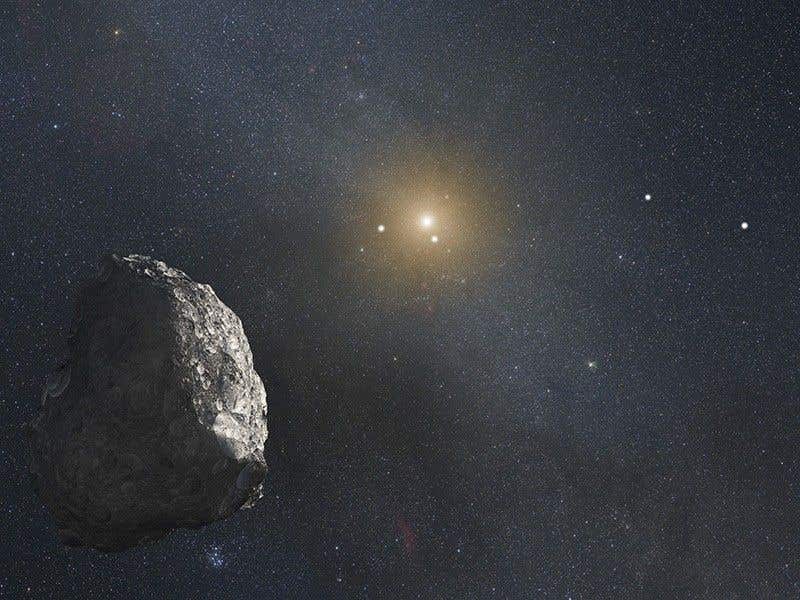Potential life on Europa? For the first time, NASA finds CO2 on Jupiter’s moon
Europa, long considered one of the top candidates for extraterrestrial life in our solar system, has caught the eye of researchers again

[Sept. 23, 2023: Staff Writer, The Brighter Side of News]
Set to launch in 2024, NASA’s Europa Clipper will travel to Jupiter’s moon Europa to investigate whether the moon has conditions necessary to support life. The data the spacecraft collects will help researchers learn more about the availability and accessibility of the ingredients for life on the moon. (CREDIT: NASA/JPL-Caltech)
Jupiter’s moon Europa, long considered one of the top candidates for extraterrestrial life in our solar system, has caught the eye of researchers yet again. Scientists have discovered evidence of carbon dioxide on the moon's surface, further fueling the hypothesis that the icy celestial body might harbor conditions suitable for life.
The thick water-ice crust of Europa conceals a subsurface salty ocean. This mysterious ocean, sitting atop a rocky seafloor, had long eluded researchers in one critical aspect: was there evidence of carbon, the building block of life as we know it?
Utilizing data from NASA’s James Webb Space Telescope, astronomers have not only identified carbon dioxide in a specific region on Europa but have also surmised that it likely originated from the subsurface ocean itself. What's more intriguing is that this carbon was deposited relatively recently from a geological standpoint.
NIRCam (the Near Infrared Camera) on NASA’s James Webb Space Telescope captured this picture of the surface of Jupiter’s moon Europa. Webb identified carbon dioxide on the icy surface of Europa that likely originated in the moon’s subsurface ocean. (CREDIT:
Credits: Science Credit: Geronimo Villanueva (NASA/GSFC), Samantha Trumbo (Cornell Univ.), NASA, ESA, CSA. Image Processing Credit: Geronimo Villanueva (NASA/GSFC), Alyssa Pagan (STScI))
Geronimo Villanueva of NASA’s Goddard Space Flight Center, the lead author of one of the groundbreaking papers, noted: “On Earth, life thrives on chemical diversity. We’re essentially carbon-based life. Grasping the chemical intricacies of Europa’s ocean is pivotal in discerning whether it might be hostile or hospitable to life."
Building on Villanueva's thoughts, Samantha Trumbo from Cornell University, who led another independent analysis, added, “We now think that we have observational evidence that the carbon we see on Europa’s surface came from the ocean. That's significant. Carbon is a fundamental element for biology.”
The James Webb Space Telescope showed that carbon dioxide was most abundant in a region known as Tara Regio. This particular area is a ‘chaos terrain’ – a unique geological zone where the ice surface has been disrupted, indicating an exchange of materials between the subsurface ocean and the surface.
Related Stories
“Prior data from the Hubble Space Telescope already pointed towards ocean-derived salt in Tara Regio,” Trumbo explained. “The pronounced concentration of carbon dioxide there further cements the belief that the carbon's ultimate origin might be the internal ocean.”
Villanueva, echoing the same sentiment, remarked, “The big debate is about the connection between Europa’s ocean and its surface. These revelations hint that we might unravel the ocean’s composition even without having to drill through the ice.”
The data, gathered using Webb’s Near-Infrared Spectrograph, provides a detailed chemical map of Europa's surface. Interestingly, carbon dioxide isn’t stable on Europa’s exterior. This suggests that its presence is a result of recent geological activity, particularly since it's found in areas of younger terrain.
Composition and capabilities of Webb’s Near-Infrared Spectrograph. (CREDIT: Webb Space Telescope)
Heidi Hammel, leading Webb’s solar system observations, lauded the efficiency of the telescope, stating, “These observations only took a few minutes. Still, their implications are vast, offering a glimpse of the remarkable solar system research Webb is capable of."
Another intriguing pursuit for researchers has been the quest for a water vapor plume on Europa. While previous Hubble observations tentatively identified plumes, definitive proof remains elusive. The Webb data currently shows no plume activity. However, Villanueva's team emphasized that this non-detection doesn't negate the existence of a plume.
This graphic shows a map of Europa’s surface with NIRCam (Near Infrared Camera) on NASA’s James Webb Space Telescope in the first panel and compositional maps derived from Webb’s NIRSpec/IFU (Near Infrared Spectrograph’s Integral Field Unit) data in the following three panels. In the compositional maps, the white pixels correspond to carbon dioxide in the large-scale region of disrupted chaos terrain known as Tara Regio (center and right), with additional concentrations within portions of the chaos region Powys Regio (left). The second and third panels show evidence of crystalline carbon dioxide, while the fourth panel indicates a complexed and amorphous form of carbon dioxide. (CREDIT: Geronimo Villanueva (NASA/GSFC), Samantha Trumbo (Cornell Univ.), NASA, ESA, CSA. Image Processing Credit: Geronimo Villanueva (NASA/GSFC), Alyssa Pagan (STScI))
Hammel elaborated, “These plumes could be variable, visible only at certain times. The certainty is that during Webb’s observations, no plume was detected at Europa.”
These revelations are anticipated to guide future missions, including NASA’s Europa Clipper scheduled for October 2024 and the European Space Agency’s upcoming Jupiter Icy Moons Explorer (JUICE).
While the enigmatic moon of Jupiter continues to tease and fascinate, each discovery brings humanity a step closer to understanding its potential as a cradle for life beyond Earth. The quest to unravel Europa's mysteries continues, promising more groundbreaking discoveries in the years to come.
For more science and technology stories check out our New Discoveries section at The Brighter Side of News.
Note: Materials provided above by The Brighter Side of News. Content may be edited for style and length.
Like these kind of feel good stories? Get the Brighter Side of News' newsletter.



